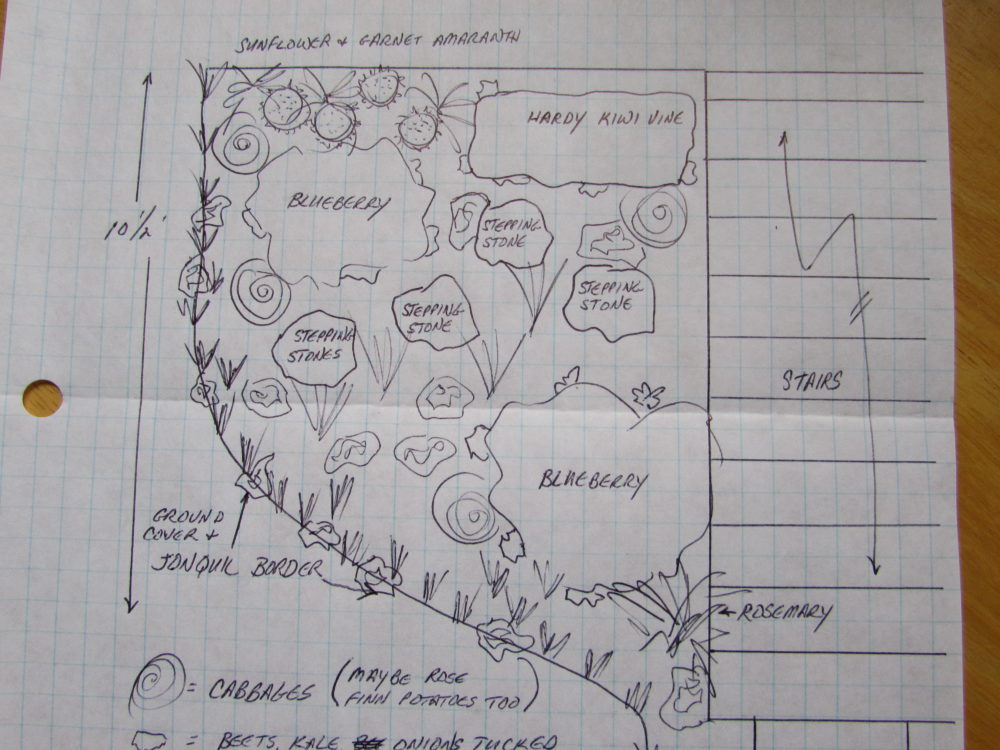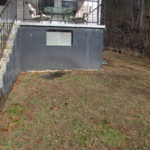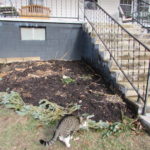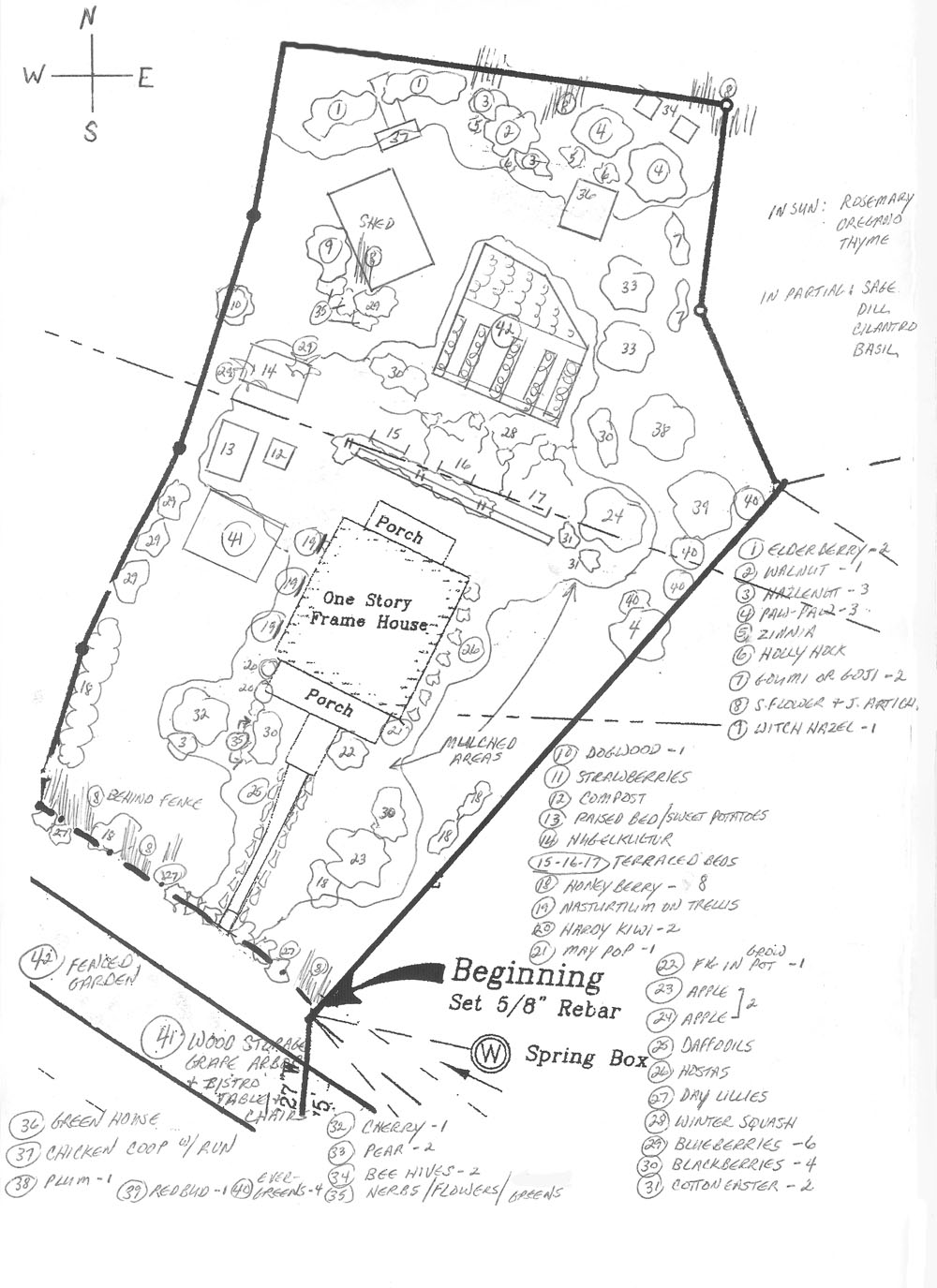Well, we might actually do something approaching the “slightly scientific” here on The Little Half Acre! We’re going to compare two different methods of “no-dig” or “no-till” gardening to see which produces the best results.
But first of all, why no-dig gardening? Why not just buy a big ol’ garden tiller and go for it? Tilling is fast and relatively painless. But that’s not for us for a couple of reasons. We couldn’t use a garden tiller on this half acre if we tried, even if we wanted to. Every single hole we dig for a blueberry bush or an asparagus crown involves a good half hour of sweating and swearing (in equal measure!) and a wheelbarrow chock full of rocks and boulders when we’re done. Seriously folks, if rocks were a commodity, we’d be fabulously rich and famous!
Okay, so tilling is out as an easy option. But even if we had perfectly loose, loamy soil, I still wouldn’t choose to till the garden areas. Here’s what happens when you run a garden tiller through a patch of lawn that you’re converting to a garden area.
Your garden area will probably look fabulous at first. But rototilling disturbs and, eventually, destroys the millions of microbes in the top few inches of your soil. Ever notice how, in a first time garden area that you till, the first produce is fabulous? And then the next crop is not so great? And then, by the third growth, the soil is hard and compacted and you’re piling on fertilizers as you fight tons of weeds? It’s because massively disturbing the soil releases an absolute tornado of microbial activity — activity that can’t be sustained long term without fertilizing and re-tilling. The result? Dead soil. So, for us, the less we disturb the soil, the better.
The earth wasn’t created to be bare. It wasn’t created for man made intervention. A beautiful, newly tilled garden bed looks so fabulous and inviting and you can’t wait to see veggies springing up out of all that luscious, freshly turned soil. But of course, veggies aren’t going to be the first thing you see “springing up.” Or at least, they’re not the only thing. You’re gonna see pioneer weeds and grasses. The purpose of these pioneer weeds and grasses is to repair the soil because, in nature, bare soil is not normal. Do you ever see bare earth in a forest? In a meadow? Nope. You see a wide variety of plants, decomposing and dead materials and yes — trees or grasses. If you’ve ever watched a newly logged area over a few years time, you can watch the fascinating progression from traumatized, bare earth to pioneer weeds to pioneer shrubs and undergrowth and then, finally, to young trees rising above those first plants to re-forest the bare earth. That’s what nature will try to accomplish in your tilled garden. Eventually, if you aren’t constantly feeding and tilling, you’ll end up with a grassy lawn area again.
Here’s what I love about permaculture. In permaculture, every effort is made not to disturb the complex and abundant life that already exists in the soil. Every effort focuses on mimicking Mother Nature. So, on to our no-dig gardening comparison.
Our experiment is in progress in the front yard. On either side of the porch steps, we’re converting the existing lawn into two permaculture growing areas. It’s a typical grassy front yard for our area, with clay and tons of rocks just under the grass. And there’s one rather large boulder just barely sticking up out of the ground on the right side of the porch. We will use one method of no-til gardening on one side of the steps and another on the right.
On the left side, I’m building the garden bed the way I’ve always done it. First, a layer of overlapping cardboard goes down to kill all the grass underneath. The next layer comes from a bonus product. I grow organic microgreens indoors as a cash crop. After harvest, the organic potting mix in the trays, along with the root mass the microgreens produced, has to be thrown out so you can start all over again with new potting mix and new seed. Instead of a useless waste product, this potting mix with it’s decaying root masses gets pitched into any growing area that I’m building. It provides rich organic matter and “instant” soil (or almost instant). Along with that I add garden waste, leaves and grass clippings — whatever happens to be available at the time. Then I add a bit of compost on top and, finally, a layer of mulch (usually leaves) to hold all the layers in place. As the underlying layers decompose they create a healthy growing area for a miniature food forest.
The left side growing area will look something like this:
 The front porch gets unbearably hot on summer afternoons as it faces southeast. The Hardy Kiwi that will be planted in the corner on either side of the steps will help alleviate this problem. Hardy Kiwi grows rapidly (sometimes up to 25 feet in a single season). As it grows up the porch wall and along the iron railings (which are hideously ugly) it will provide much needed shade and help camoflauge the ugly rails. Although it may die back over the winter here in zone 6B, it will bounce right back the following spring. Of course, in permaculture, everything in the garden or on the homestead, must serve several purposes. This is known as “stacking functions.” In this particular location, the Hardy Kiwi will do just that. It will produce a small, fuzzless fruit similar to it’s larger cousin so it provides food. It flowers in early spring when pollinators are looking for a food source. It will create that much needed shade for the porch and finally, because of it’s fast growth, it will create biomass that can be chopped down when it dies back in the fall. When this biomass gets spread throughout the growing bed it will provide mulch to hold moisture in the bed and, as it breaks down, it will provide nutrients for the other plants.
The front porch gets unbearably hot on summer afternoons as it faces southeast. The Hardy Kiwi that will be planted in the corner on either side of the steps will help alleviate this problem. Hardy Kiwi grows rapidly (sometimes up to 25 feet in a single season). As it grows up the porch wall and along the iron railings (which are hideously ugly) it will provide much needed shade and help camoflauge the ugly rails. Although it may die back over the winter here in zone 6B, it will bounce right back the following spring. Of course, in permaculture, everything in the garden or on the homestead, must serve several purposes. This is known as “stacking functions.” In this particular location, the Hardy Kiwi will do just that. It will produce a small, fuzzless fruit similar to it’s larger cousin so it provides food. It flowers in early spring when pollinators are looking for a food source. It will create that much needed shade for the porch and finally, because of it’s fast growth, it will create biomass that can be chopped down when it dies back in the fall. When this biomass gets spread throughout the growing bed it will provide mulch to hold moisture in the bed and, as it breaks down, it will provide nutrients for the other plants.
What else will we grow in this roughly 8′ by 10′ quarter circle? Garnet Amaranth and Black Oil sunflowers will be planted in the back along the wall of the porch to aid the shading and cooling of the porch.
The previous owners painted the house foundation (including the 5′ tall porch) black. That adds quite a bit to the heat problem in summer. Tall amaranth and sunflowers will serve multiple functions here as well. They will 1) provide food for us and for birds, 2) shade the black concrete blocks to help control heat, 3) attract birds and beneficial insects and 4) provide biomass when it’s time to chop them down in the fall. When the Hardy Kiwi, amaranth and sunflower die back in the fall after serving their multiple functions, the warm fall sun on the black porch wall will reverse the heat issue and help warm the area in cooling temperatures. We’ll be able to enjoy relaxing meals outside on the porch throughout the year as we will have created and controlled a small micro climate.
Because permaculture stands for permanent agriculture, many of the plants will be perennials. Besides planting a couple of blueberries, this growing area will host perennial herbs and flowers along with a few annual vegetables. The drawing above is a general plan for plants that we’d like to include but we’ve learned (the hard way) to keep it kind of loose as plans can change when you have a few leftover strawberry plants! If you’ve read the previous posts, you’ll be chuckling right about now.
We’ve done a lot, but the bed isn’t finished yet. Guess we better get a move on —
Anyway, that’s the plan for the left side of the porch. Food, shade, perennials, beneficials and, a huge plus for The Innocent Bystander (read, hubby), less lawn to mow!
Stay tuned — we’ll talk about the right side of the porch steps in a future post and how we’ll be using Morag Gamble’s method of no-till gardening to see which produces the best results.




